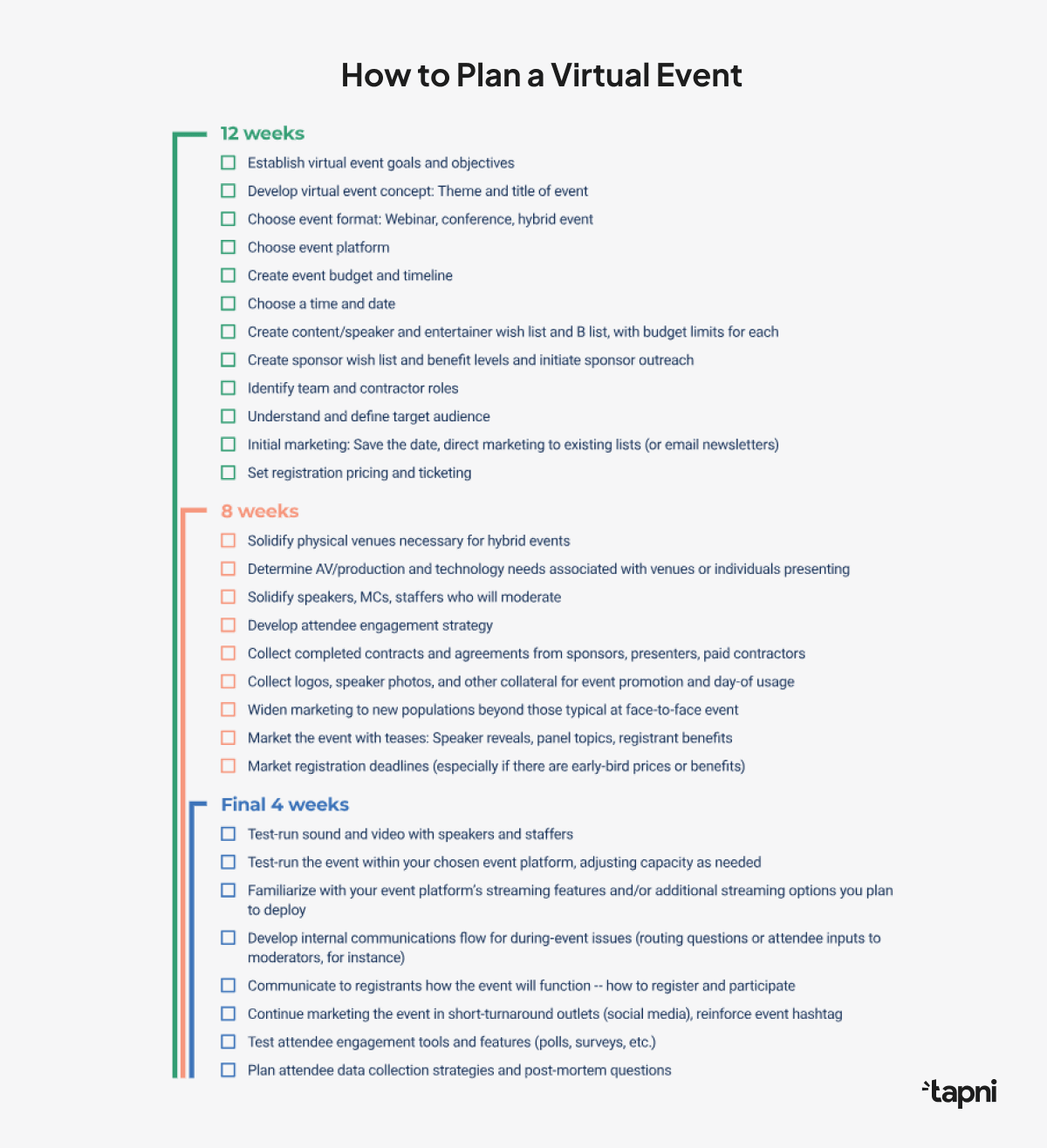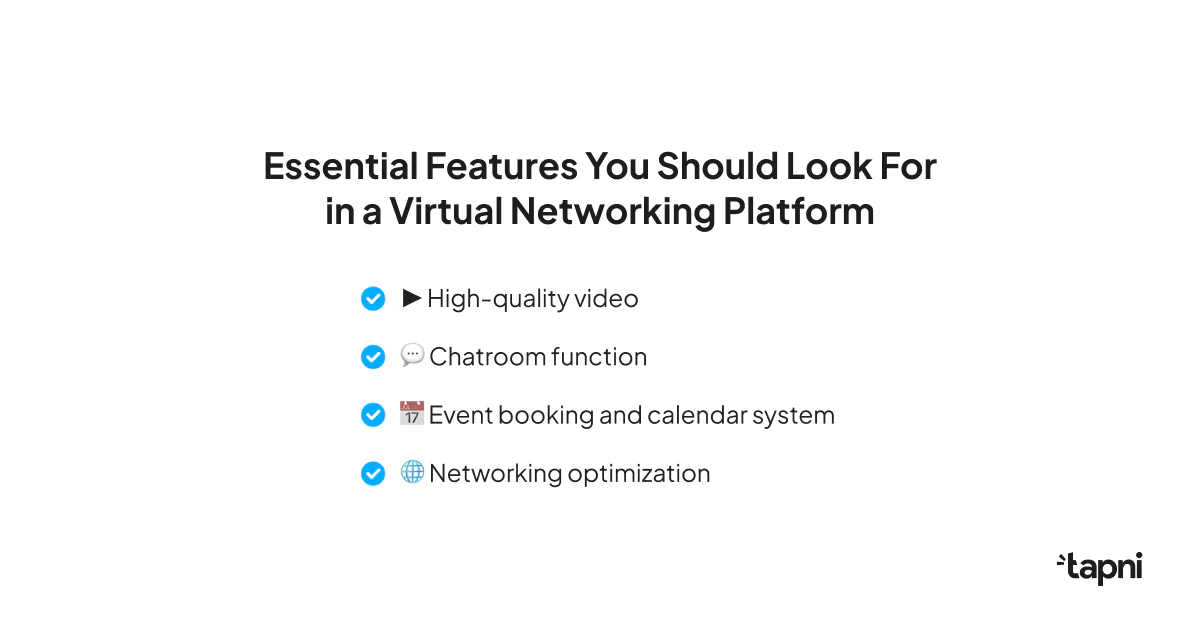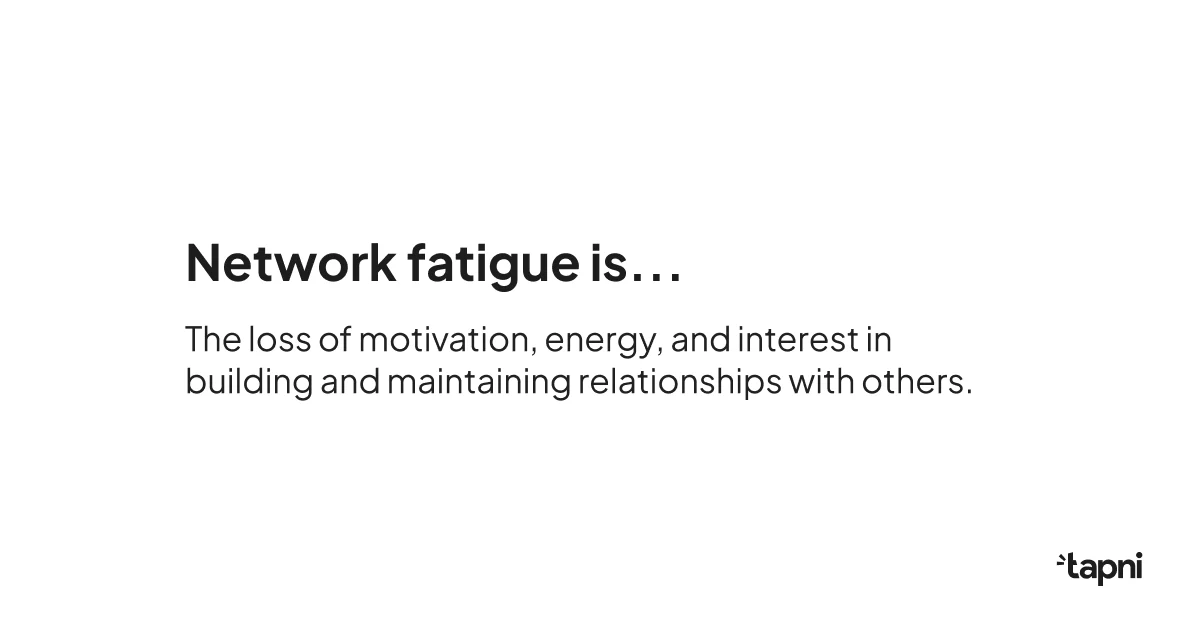Browse our comprehensive product guides and documentation


Virtual networking events have become essential for professionals to connect, learn, and expand their networks.
However, in order to host one, you need to be ready to tackle all the challenges that come with it.
If you want to host an event but feel at a loss, you’ve come to the right place.
Read on to find out how to host a virtual networking event and overcome the challenges.
Let’s dive in!
Technical problems, including audio and video issues, internet connectivity problems, and platform glitches, can disrupt the networking experience.
Virtual events may lack the natural, spontaneous interactions that occur in physical networking events.
Therefore, encouraging attendees to engage with each other, share contact information, and initiate conversations can be more challenging online.
Handling attendee data and ensuring privacy and security are paramount in virtual networking events.
Choosing the right virtual event platform that suits your networking event's needs is challenging.
Different platforms offer varying features and capabilities, and finding one that aligns with your goals can take time.
With the proliferation of online events, attendees may become overwhelmed and less enthusiastic about attending yet another virtual gathering.
Thus, ensuring that your event stands out and provides unique value is essential.
However, once you know what challenges to expect, preventing them or diminishing their effects is easier.
And that is why thorough and detailed event planning is a must. And that is what we’ll help you do.

Before diving into event planning, it's crucial to define your objectives. What do you hope to achieve with your virtual networking event?

However, watch out not to fall into a being-too-generic trap - your goals must be measurable and specific.

In other words, you need specific benchmarks because otherwise, there’s nothing to measure and compare.
Finally, understanding your goals will shape every aspect of your event, from the format to the attendees you invite.
Selecting the right virtual event platform is paramount, and thanks to technology, you can choose from various event lead generation apps, conference tools, etc.
Each platform comes with its unique features and capabilities, so you should consider the following factors when making a choice:
💡 Ease of use for attendees and hosts.
💡 Interaction options (video chats, breakout rooms, etc.).
💡 Customization and branding options.
💡 Scalability to accommodate your expected number of attendees.
💡 Integration with registration and payment systems (if applicable).

And if you wonder what’s the best virtual event platform out there, it will depend on your objectives, but according to the g2 reviews, the 5 best platforms are:

The structure of your virtual networking event plays a significant role in its success because it provides a framework to see clearly every aspect of an event.
Agenda is more than just a schedule - they represent the overall flow of your event and help you keep all the elements in check.

Incorporate a variety of sessions, such as keynote speeches, panel discussions, workshops, and networking sessions.
Don’t forget that the format should align with your objectives and audience.
Therefore, identify and invite speakers, presenters, or panelists who are experts in your event's topic.
Furthermore, collaborate with them to create engaging presentations or discussions and ensure diversity in perspectives and voices.
The main challenge of hosting a virtual networking event is ensuring effective interaction among attendees.
Unlike in-person events, where participants can freely mingle, exchange business cards, and engage in spontaneous conversations, virtual networking events lack the personal touch of face-to-face interactions.
Therefore, you must engage the audience by providing a wide range of networking opportunities, games and activities to decrease networking fatigue.

We’ll cover this segment in more detail in just a bit, but overall, incorporate:
ProTip: Digital solutions like Tapni can greatly help here - Tapni’s regrouping feature allows you to segment your audience and quickly develop the right activities to trigger engagement.
Choose a date and time convenient for your target audience, and consider time zones if your audience is global.
Moreover, decide on the event's duration - whether it is a one-day event, a multi-day event, or a series of sessions over several weeks.
Even if you’ve planned an amazing virtual event, your audience still needs to find out a bit, right?
That’s why promoting your event is such a crucial step in spreading the word about it.
Luckily, there are various marketing channels you can use:
🔥 Website and Landing Page - Create a dedicated event website or landing page with all the necessary information, a short introductory video, and registration details.
🔥 Social Media - Use platforms like LinkedIn, Twitter, and Facebook to create event pages, share updates, and engage with potential attendees.
You can also use hot and relevant hashtags to promote your event even further.
🔥 Email Marketing - Send personalized invitations and reminders to your target audience. Moreover, use it as an opportunity to offer special discount codes.
🔥 Partnerships - Collaborate with industry associations, influencers, or other organizations to expand your reach.
They could promote on their websites, social media, send emails to their subscriber list, etc.

Starting a conversation with a stranger in a virtual setting can be intimidating for some participants.
Furthermore, without the natural cues of body language and physical presence, breaking the ice can be challenging.
Thus, engagement is the cornerstone of a successful virtual networking event.
Here are some ideas to get your creative juices flowing:
💡 Virtual Lobbies - They are great places for attendees to mingle outside the session.
💡 Gamification - Gamification elements cover a wide range of areas and topics: trivia games, virtual escape rooms, treasure hunts, etc.
💡 Live chats - A great way for attendees to keep the conversation going, but also for you to answer all their questions.

You can also open the chat prior to the session, leaving attendees to get to know each other and break the ice in a more natural way.
💡 Speed Networking - Adds an element of fun and dynamics while attendees get to know each other in an allocated amount of time.
💡 and much more.

For more buzzing ideas to engage your audience, hop on to our blog, 10 Virtual Networking Ideas You Should Implement Today.
Tip: Aim to create an event that delivers valuable insights, connections, or opportunities that attendees can't find elsewhere.
ProTip: How about using QR codes to help attendees mutually connect?
For example, they can set the QR code of their digital Tapni profile as the background so other attendees can access all the relevant info immediately.
Technical issues can be a roadblock to a seamless virtual networking event.
In order to prevent that, have a tech support team in place to assist attendees with any difficulties they may encounter, such as login problems, audio issues, or navigating the platform.
If you're using a virtual event platform, configure the streaming settings within the platform.
On the other hand, if you're streaming on social media or video-sharing platforms, set up the event accordingly, including privacy settings.
Also, don’t forget to record the live stream to create an on-demand version you can share with participants who couldn't attend in real time.
Don't let the networking connections fade away after the event. Follow up with attendees by sharing resources, recording links, and contact information.

ProTip: Did you know that Tapni has a follow-up feature that connects to your CRM and acts as a reminder on your phone?
Analyze key metrics, such as attendance, engagement, and participant feedback, to evaluate the event's success and identify areas for improvement.

ProTip: Digital solutions, such as Tapni, come with a set of analytics tools to provide detailed insight into the event’s metrics.
Hosting a virtual networking event can be a powerful way to achieve your professional or business objectives.
Furthermore, these events are a bridge to building meaningful connections and fostering professional growth in today's digital landscape.
And if you back up your event with proper digital solutions, you are not only diminishing any challenges that may arise but also creating more quality networking opportunities.
Tapni is a digital business card provider that is all about networking.
Furthermore, Tapni stores many cool features under its umbrella that can help you with networking events and engaging attendees:
✨ Lead Generation Automation - Collects and sends attendees’ data directly to your CRM, such as Hubspot, Salesforce, etc.
✨ Instant messaging - Allows you to automatically send a message to all the attendees who have visited your profile or have contacted you.
✨ Grouping features - Regroup attendees and move them to other groups back and forth. Also, you can add markers or tags to filter your contacts further.
✨Custom links - Allow you to create a customizable page for every new event.

✨ Direct links - Show only the social media profile you want your new contacts to see.
✨ Multiple sharing options - Allow you to share and exchange info via email, links, messages, etc.
✨ Follow-up feature - Enables you to set reminders on your phone to follow up with your new contacts, attendees, etc.
✨Analytics and Metrics Tools - Measure ROI at events, reward top performers, allow you to see the number of visits, etc.

Ready to see what more Tapni has to offer?
Download the Tapni app today and find out what the future of networking looks like.